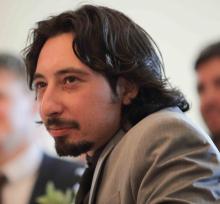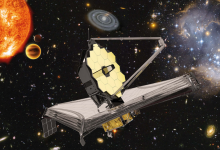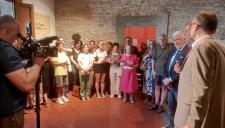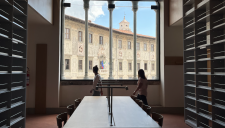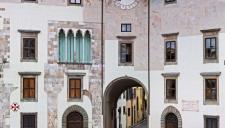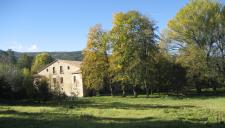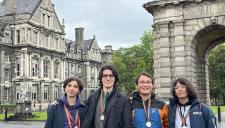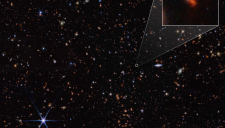The largest space telescope ever constructed, the James Webb (JWST), is to be launched on 31st October from the European spaceport of Kourou, in French Guiana. The experiment proposed by the Cosmology group led by Andrea Ferrara will be studying the formation and evolution of the first galaxies, around 13 billion light years away from Earth. The Scuola Normale is the only Italian research center among the 77 selected in the “Galaxies” sector.
Pisa, 7 april 2021.
NASA has chosen a scientific experiment presented by the Cosmology Group of the Scuola Normale Superiore for the observation of the first galaxies forming immediately after the Big Bang. The research project will thus become part of the international scientific programme planned for the first cycle of observations of the James Webb Space Telescope, the largest ever constructed, which is set to unveil further secrets as to the origin of the universe.
With its superior imaging capacity and high resolution spectroscopy, the JWST will extend the discoveries of the Hubble Telescope, which it is intended to succeed; it will be launched into solar orbit on 31st October 2021 from Kaurou, in French Guiana, on the north-eastern coast of South America. After all its instrumentation has been checked, it will begin its observations of the Universe from May 2022, by which time the spacecraft will have travelled over a million kilometres.
For what is considered a fundamental step in our understanding of the cosmos and its beginnings, NASA, the European Space Agency (ESA) and the Canadian Space Agency (CSA) have jointly called upon the international scientific community to propose scientific projects designed for the purpose of shedding light on the origins of the Universe, making available 6000 hours of observations in the first “working” cycle of the telescope, and involving 8 research sectors.
Over 1000 proposals were received by 24th November of last year from scientists from 44 countries. The experiment presented by the Cosmology Group of the Normale (“Galaxy assembly at z > 6: unraveling the origin of the spatial offset between the UV and FIR emission”), whose Principal Investigator is SNS researcher Stefano Carniani, was among the 286 selected. The Scuola Normale is the only Italian research centre that has a project among the 77 selected in the Galaxies section.
The project of the cosmologists of the Normale is to focus in particular on the study of the formation and evolution of the first galaxies, around 13 billion light years away from Earth; it will be allotted 21.3 hours of observation. It will receive specific support personnel from the agencies of the international collaboration, in addition to a budget soon to be announced. The Cosmology Research Group is led by Andrea Ferrara, and, in addition to Carniani, consists of Simona Gallerani, Andrea Pallottini, Livia Vallini, Evangelia Ntormousi and Mahsa Kohandel.
“The telescopes currently at our disposal have afforded us only a superficial study of the characteristics of the first galaxies”, explains Carniani. “The James Webb Space Telescope
will revolutionise the field, allowing us to obtain crucial information as to the first stages of evolution of galaxies. In particular, our experiment will focus on the light emitted by the stellar populations and ionised gas inside three galaxies dating back to a mere 500-900 million years after the Big Bang. These observations will enable us to understand precisely how these galaxies formed and when”.
"The assigning of this precious amount of observation time to our project”, comments Prof. Ferrara, “is a recognition of the work that the Cosmology Group is carrying out, in the framework of an ERC Advanced Grant funded by the EU, that favours the close combination of theoretical and experimental approaches to the study of the primordial Universe. Furthermore, it emphasises the leading role of the Scuola Normale in international-level scientific research in a particularly competitive field”.

